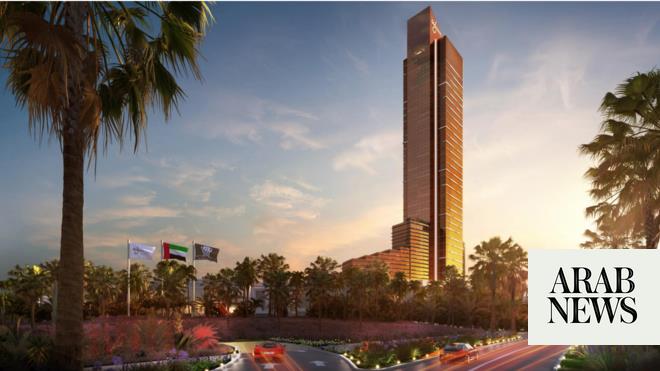
DUBAI: Roughly 23 kilometers southwest of Ras Al-Khaimah city lies the abandoned town of Al-Jazirah Al-Hamra. The last surviving pearl diving and seafaring settlement in the country, its ghost-like appearance and traditional coral-stone architecture have proved a magnet for the curious over the years. Now an anthropological spotlight is being shone on the once-vibrant community, providing valuable insight into the lifestyles of those who used to live there.
For the latest updates, follow us on Instagram @arabnews.lifestyle
A series of five short films are being screened in the town until April 3, each providing a glimpse of what life was like prior to its abandonment in the 1960s. Screening as part of the Ras Al-Khaimah Fine Arts Festival, which has been held at Al-Jazirah Al-Hamra since 2019, each film is an oral history, providing an invaluable window into life in the country’s best-preserved coastal community.
“We really wanted to capture the site and showcase all the work that has gone into Al-Jazirah Al-Hamra in recent years, while at the same time using it as a platform to promote modern and contemporary art in the emirate,” says David Dingus, a research associate at the Sheikh Saud bin Saqr Al-Qasimi Foundation for Policy Research, the festival’s organizer. “We received overwhelmingly positive feedback, but everyone wanted to know more about Al-Jazirah Al-Hamra.”
The film features first-hand accounts from people who grew up there, including Jamal Al-Ahmed and Abdullah Saeed Al-Zaabi. (Supplied)
The problem was, very little information was available, so the foundation began researching. It soon became apparent, however, that the only way to gather information would be to interview surviving inhabitants. That in turn would prove challenging, not only because many former residents have died, but because distance and COVID-19 made face-to-face interviews much more difficult.
Initially, respondents tended to be in their fifites, but they were too young to recall the intricacies of life prior to 1968, so the foundation continued searching for older inhabitants. Eventually they tracked down a number of men who were ideal, but not all would or could participate. And although a handful of women were found, none would agree to be filmed. In the end, five men were interviewed for the project.
One of them was Sultan Mohamed Al-Zaabi, who was born in the town and lived there until he was 22. His family had two houses — one in the market and one in the neighborhood of Al-Munakh — and by his late teens he was working as a fisherman, often spending hours at sea.
Life was tough, though. Breakfast consisted of dates and coffee, and maybe some bread if you were lucky, and rice and fish would be served for dinner. Medical care consisted largely of traditional remedies and there was no drinking water. The latter had to be brought in by donkey every day before dawn. “One big bottle of water was usually enough for one day or two,” recalls Abdullah Saeed Al-Zaabi. “The water would be poured into the well. As for washing and showering, seawater was used. Every house was near to the sea.”
“Whoever had fish and dates back then lived comfortably,” says Al-Ahmed. “Our house had three stores (rooms), a well, a kitchen, and a majlis. It was not very big, but it was not small either. It was a decent house. Most of Al-Jazirah was built with stones, but a few of the homes were built using palm fronds. Plaster was also a common building material. It would be burned, crushed, and then made. A house would hold up to 10 people. One store was enough for parents and their children to sleep in. There was no electricity, only lanterns.”












